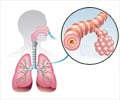Energy poverty leads to severe respiratory diseases killing nearly two million people worldwide each year, say researchers.

[N.B. Zerriffi is participating in a AAAS press briefing at 1 p.m. on Thursday, Feb. 16, Vancouver Convention Centre room 223-224. He is available for interviews after the press briefing on Thursday, Feb. 16 and the morning of Friday, Feb. 17. He can be reached at 604.338.2207. Zerriffi's symposium takes place Friday, Feb. 17 at 1:30 p.m. Twitter hashtags: #AAASmtg and #UBC]
It is often women and children who suffer the most from indoor air pollution, and who carry the burden of collecting fuel to burn, says Zerriffi. Beyond the health and gender equity implications, burning biomass is also associated with environmental concerns such as carbon emissions and climate change.
Zerriffi and his graduate students are researching ways to switch people to cleaner cookstoves. Despite the availability of technology that can burn a variety of fuels more efficiently, governments, for-profit businesses and non-governmental organizations have made little progress in getting individuals to switch to improved cookstoves and modern fuels.
"We need to combine new technologies with smart policies," Zerriffi says. "We need to help create viable markets, encourage households to switch to new stoves, and fix some of the gaps in funding – especially for those at the lowest end of the income scale."
"It's a complicated problem because governments can't afford to hand out improved cookstoves to a continually growing population, and the private sector needs to recover its costs so they can continue to distribute more stoves."
Advertisement
According to him, the problem is that the majority of consumers who need this product are very poor with little disposable income for stoves. With this consumer base, businesses don't have the additional resources needed to market the product and sustain their operations.
Advertisement
Organizations distributing cookstoves can apply for carbon credits in the internationally regulated carbon offsets market or sell them on the voluntary market. But according to Zerriffi and his colleagues, these programs have received mixed reviews.
Zerriffi's colleague Michael Brauer, of the UBC School of Population and Public Health, is evaluating one such carbon credit-financed program in India. Brauer, who along with Zerriffi is a co-organizer of the AAAS symposium on Feb. 17, will measure health improvements, to what extent emissions relevant to both human health and climate change are being reduced, and whether the stoves are sustainable and accepted in the community.
"There is great potential to dramatically improve people's lives and reduce a major source of emissions related to climate change," says Brauer, "but there is also the potential to squander lots of money and goodwill."
Source-Eurekalert













